Imagine Victorian London of 1890 but with surreal pig-chicken creatures roaming the suburbs and vehicles zipping through the air like chairlifts. No, you’re not dreaming; you’re simply witnessing the visually magnificent director Yorgos Lanthimos’s latest movie: ‘Poor Things.’
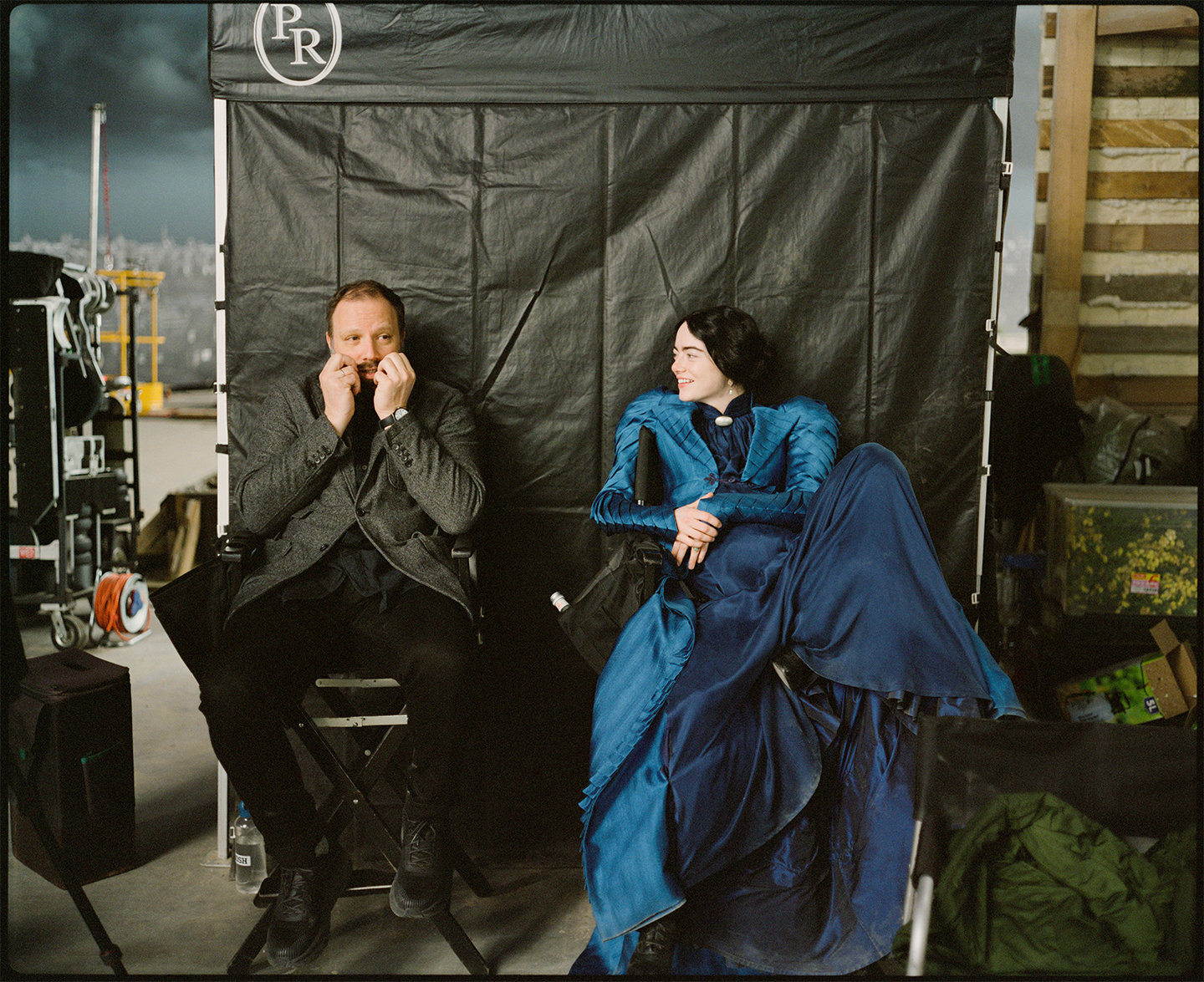
Director Yorgos Lanthimos and actress Emma Stone behind the scenes during the filming of 'Poor Things.' Courtesy of Searchlight
In the film, Emma Stone embodies Bella Baxter, a young woman with an infant’s brain, resurrected by a scientist after her suicide. As she traverses the globe, Bella seeks self-discovery and worldly exploration.
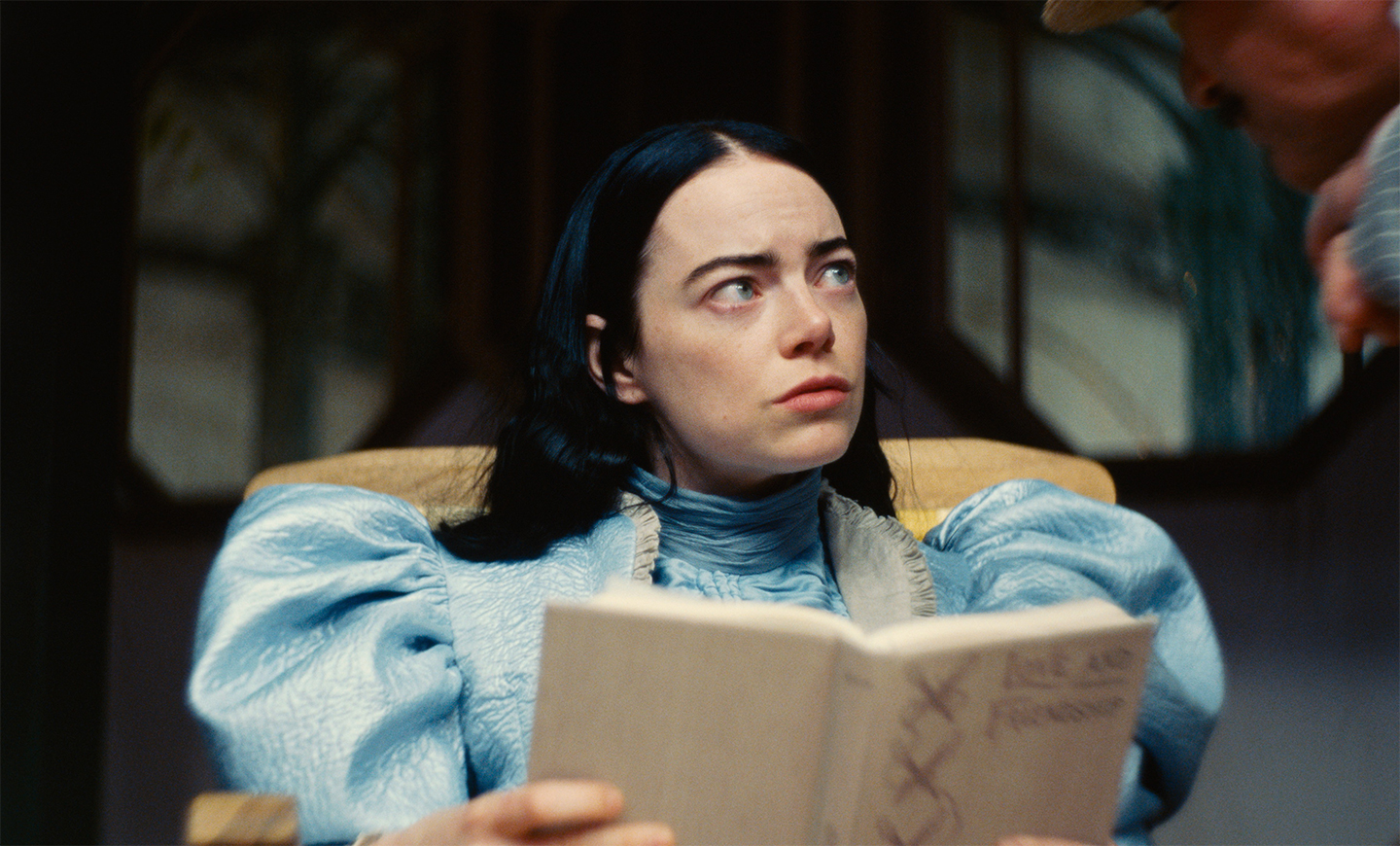
Emma Stone portrays Bella Baxter in Yorgos Lanthimos's latest movie, 'Poor Things.' Courtesy of Searchlight
The film is based on a reinterpretation of the 1992 novel by Scottish writer Alasdair Gray, to which Lanthimos acquired the rights two years prior to Gray’s death. ‘Poor things’ draws from Mary Shelley’s ‘Frankenstein’, placing womanhood, liberation, self-consciousness, and independence at its epicentre. It is a humorous take on societal taboos and men’s expectations of women, purposefully resonating in modern times and shedding light on the often-absurd demands of men and society at large.
In September 2023, ‘Poor Things’ clinched the Golden Lion at the Venice Film Festival, followed by seven Golden Globe nominations. Last January, the film secured the Golden Globe Award for Best Motion Picture (Comedy or Drama), with its star, Emma Stone, also winning the prize for lead actress in a comedy.
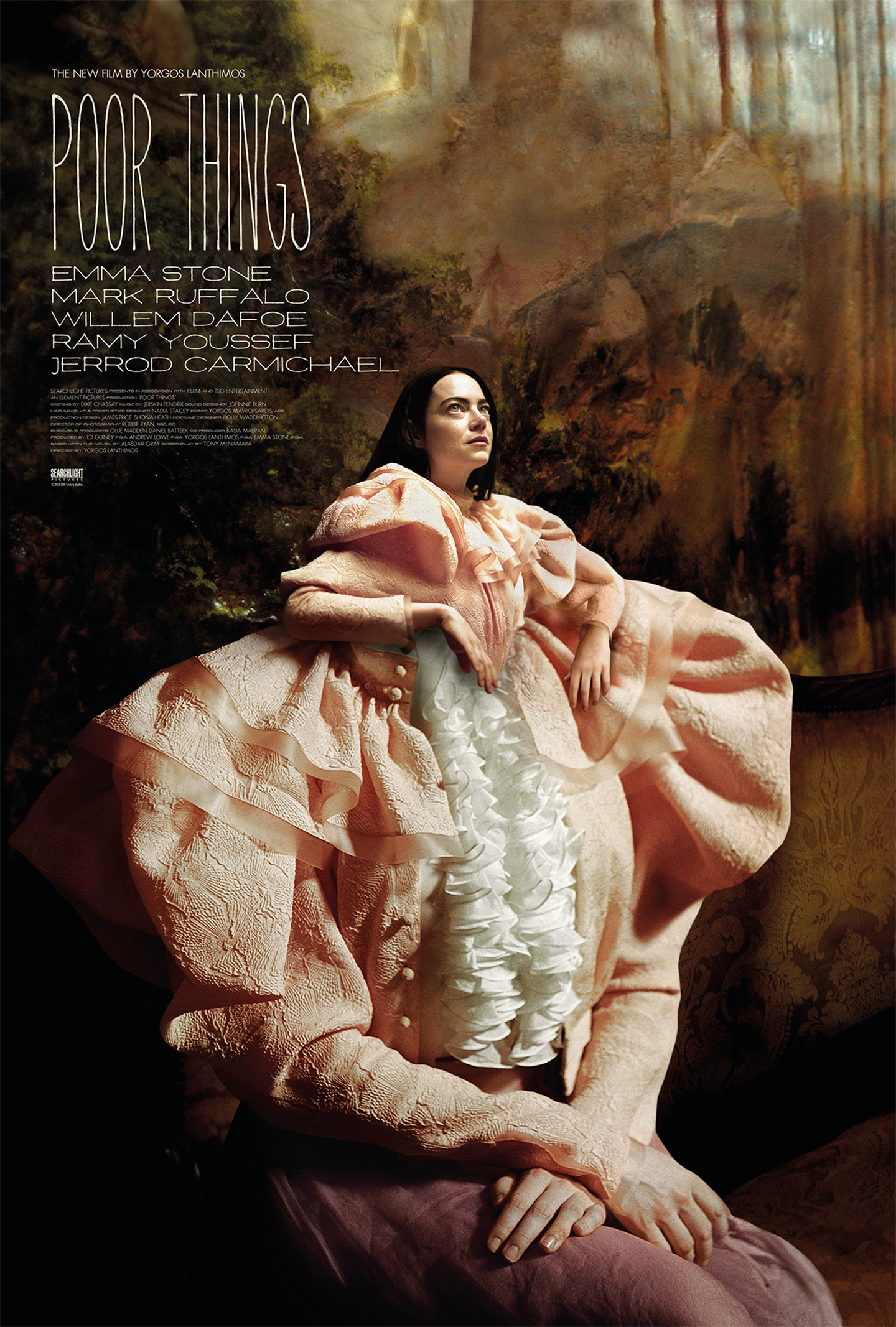
A movie poster for 'Poor Things,' courtesy of Searchlight
Yet, while the seven Golden Globes and eleven Oscar nominations, including best costumes and set design, are certainly thrilling, they aren’t essential to recognise the marvellous artistry within this film’s construction.
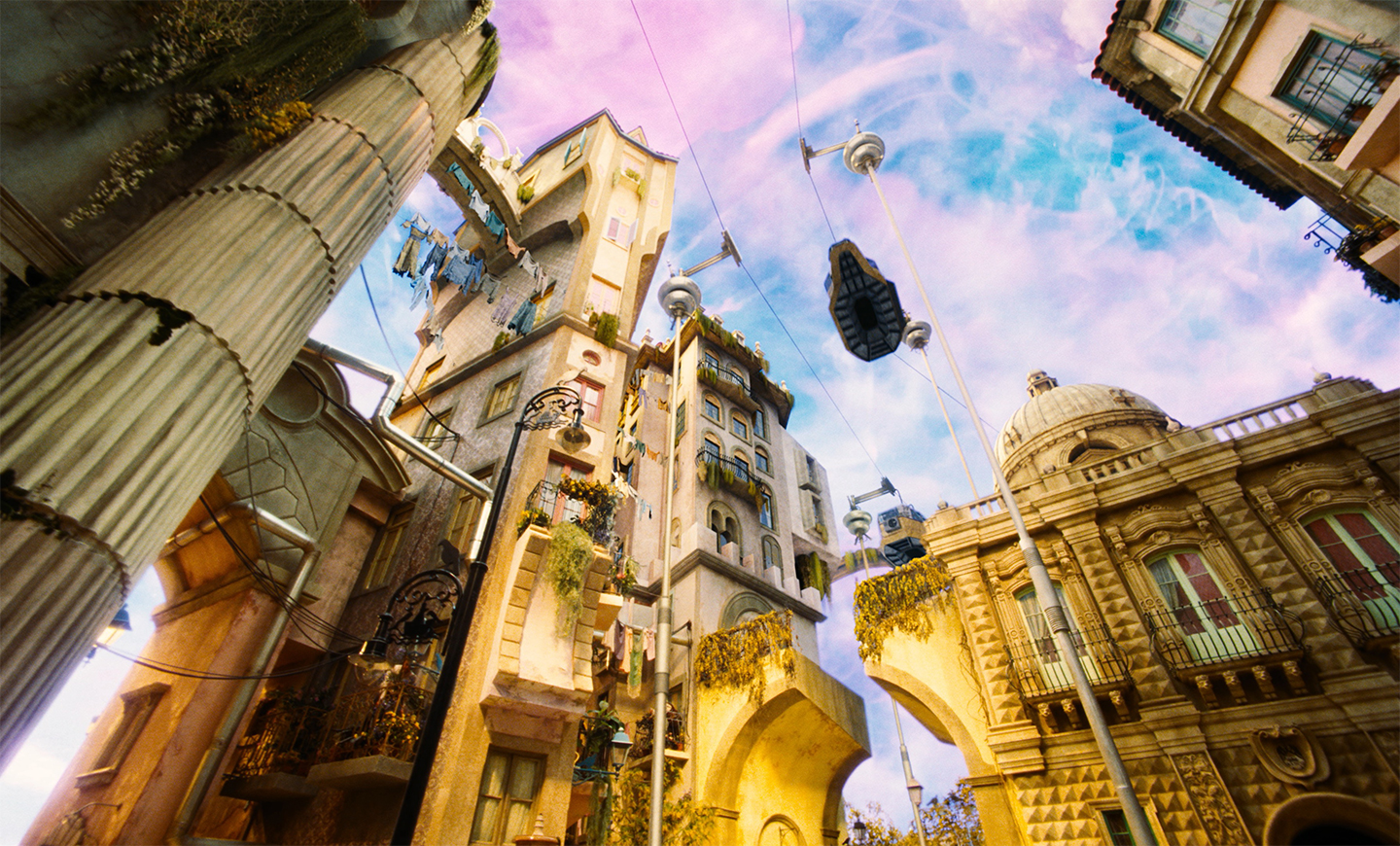
Set design for 'Poor Things' by Shona Heath and James Price. Courtesy of Searchlight
The vibrant chromatic assonances, referencing surrealist painters and a dystopian futuristic landscape with details from disparate periods, propel the visual narrative to a quantum leap.
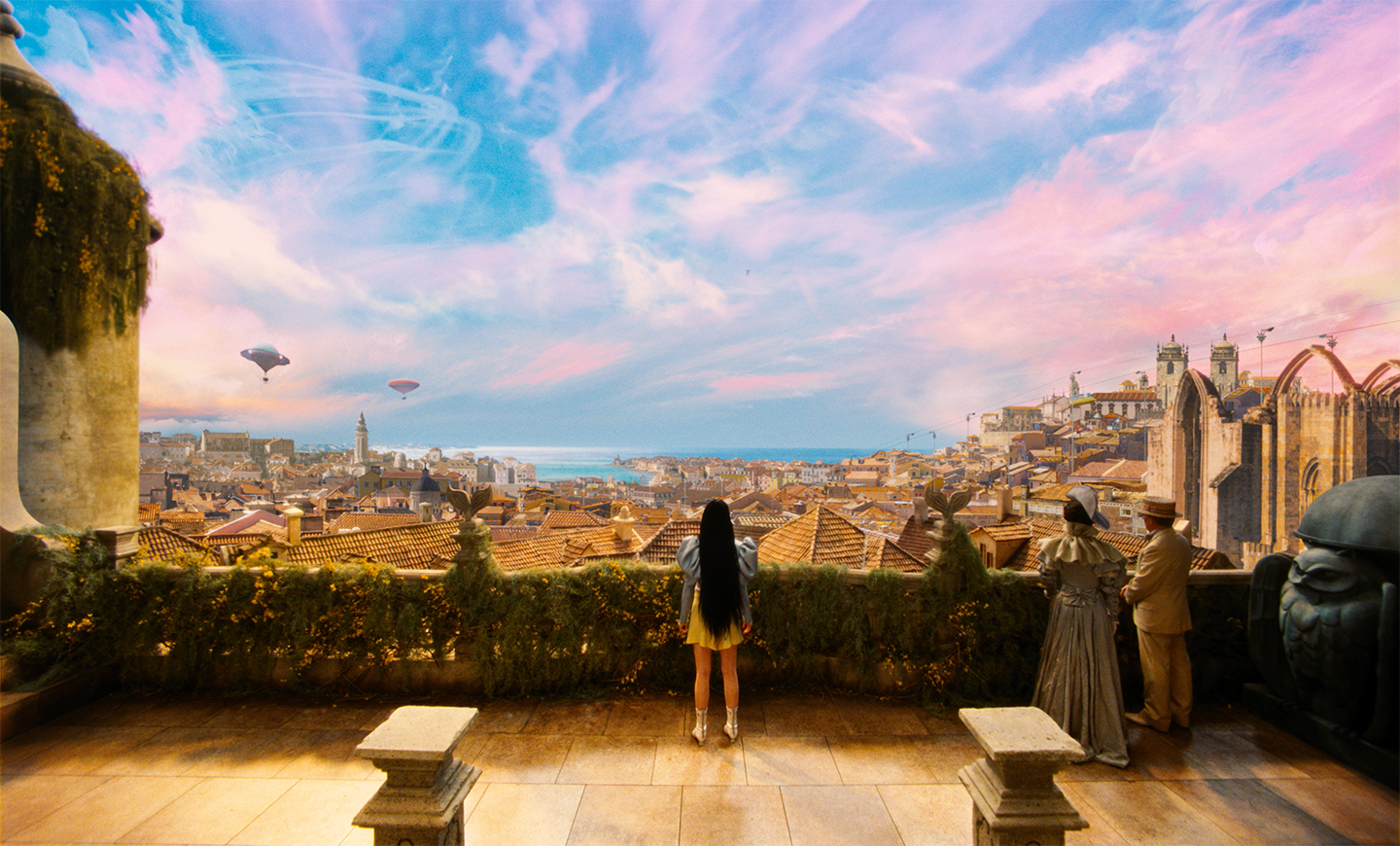
Set design for 'Poor Things' by Shona Heath and James Price. Courtesy of Searchlight
This creates a visual escapade capable of transporting us into an otherworldly, glazed, and surreal vision.
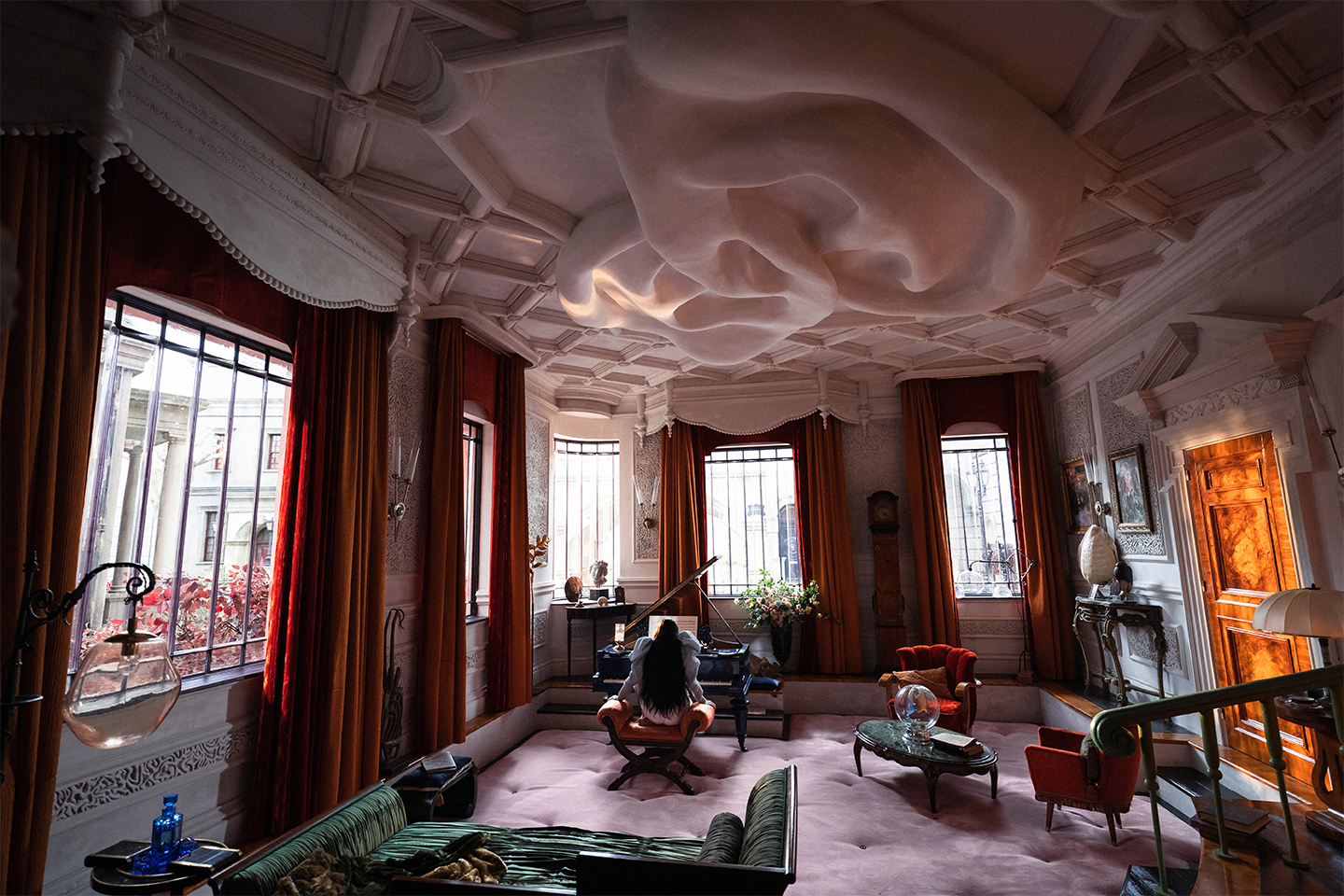
Set design for 'Poor Things' by Shona Heath and James Price. Courtesy of Searchlight
Production designers James Price and Shona Heath, who collaborated to create some of the most imaginative sets, described Lanthimos’s vision to Architectural Digest. “It’s sort of a poisoned chalice when you’re told, ‘I want to make a 1930s studio movie, using today’s technologies and also techniques from the time, but I want it to look like nothing that’s ever been seen before,’” Price told AD.
Not Your Typical Historical Costumes
Breaking away from conventional historical attire, costume designer Holly Paddington infused a distinct flair into the screen with a blend of surrealist painter styles and Aleksandr Michajlovič Rodčenko’s 1920s art, coupled with a futuristic, sci-fi edge.
Visualizza questo post su Instagram
This unique approach captured the essence of the scrappy character through meticulous attention to contrasts, harmony, and balance, seamlessly intertwining historical nuances with a modern, intuitive touch.
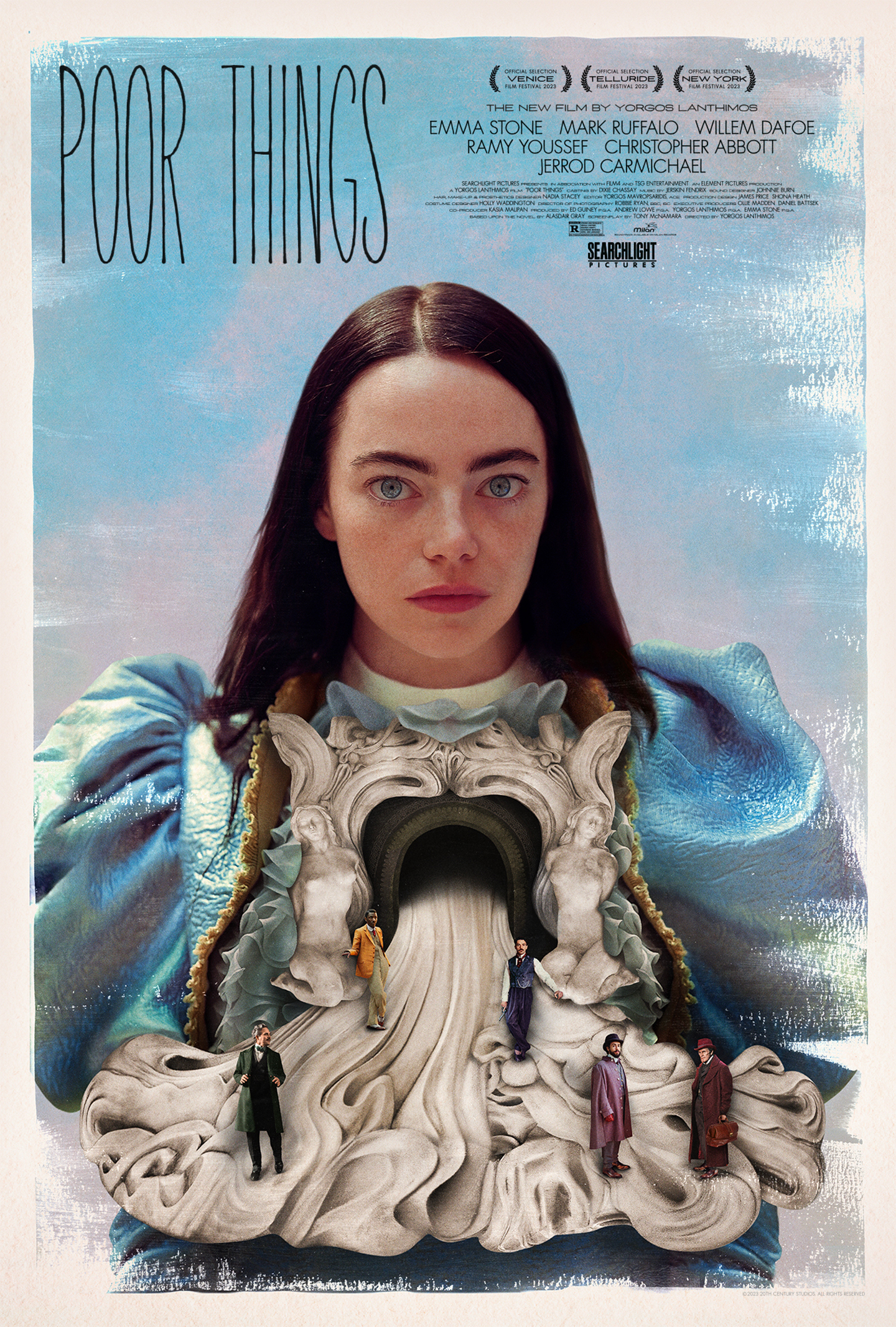
A movie poster for 'Poor Things,' courtesy of Searchlight
The costumes vividly mirror Bella Baxter’s journey from childhood to adulthood, epitomising her self-realisation. Shaped during her hedonistic travels across Europe, North Africa, and Central Asia, they embody her evolving beliefs.
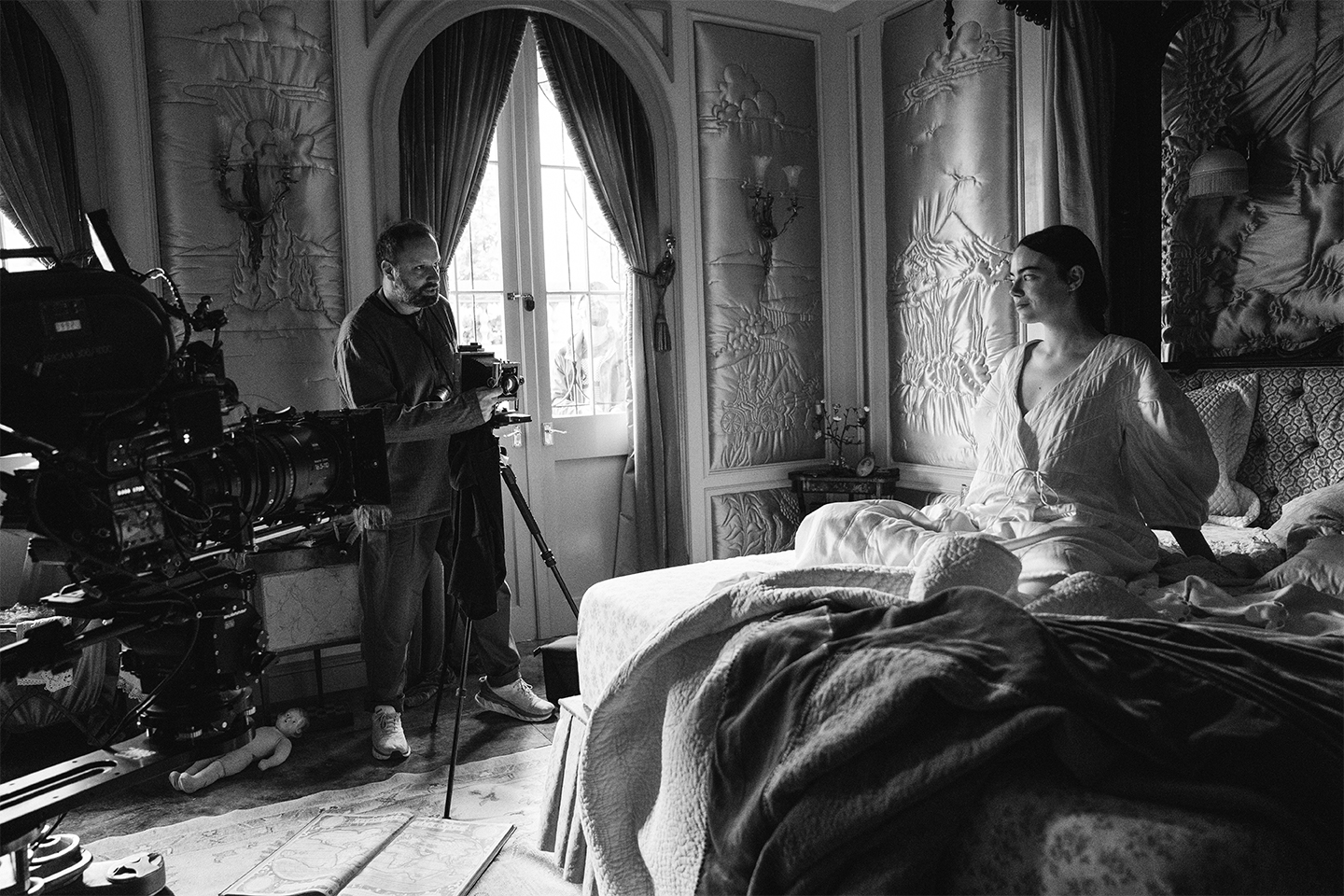
Director Yorgos Lanthimos and actress Emma Stone behind the scenes during the filming of 'Poor Things.' Courtesy of Searchlight
Divided into 5 stages, each mirroring a phase of brain development, the first chapter portrays Bella as a newborn child despite her physical appearance. Her main, Mrs. Prim, carefully selects Bella’s garments, which give her a childish look and serve as a kind of uniform. Playful volumes, dominant textures, sizable puffs, round collars, and fairy tale colour combinations define this initial stage. Additionally, traditional clothing conventions are subverted, with pieces meant for intimate spaces, such as traditional drawers, being worn as pants, and the bustle, typically worn beneath a gown for structure, being used as a half gown in itself. This portrayal reflects a bizarre, quirky vision that goes beyond any specific moment in time.
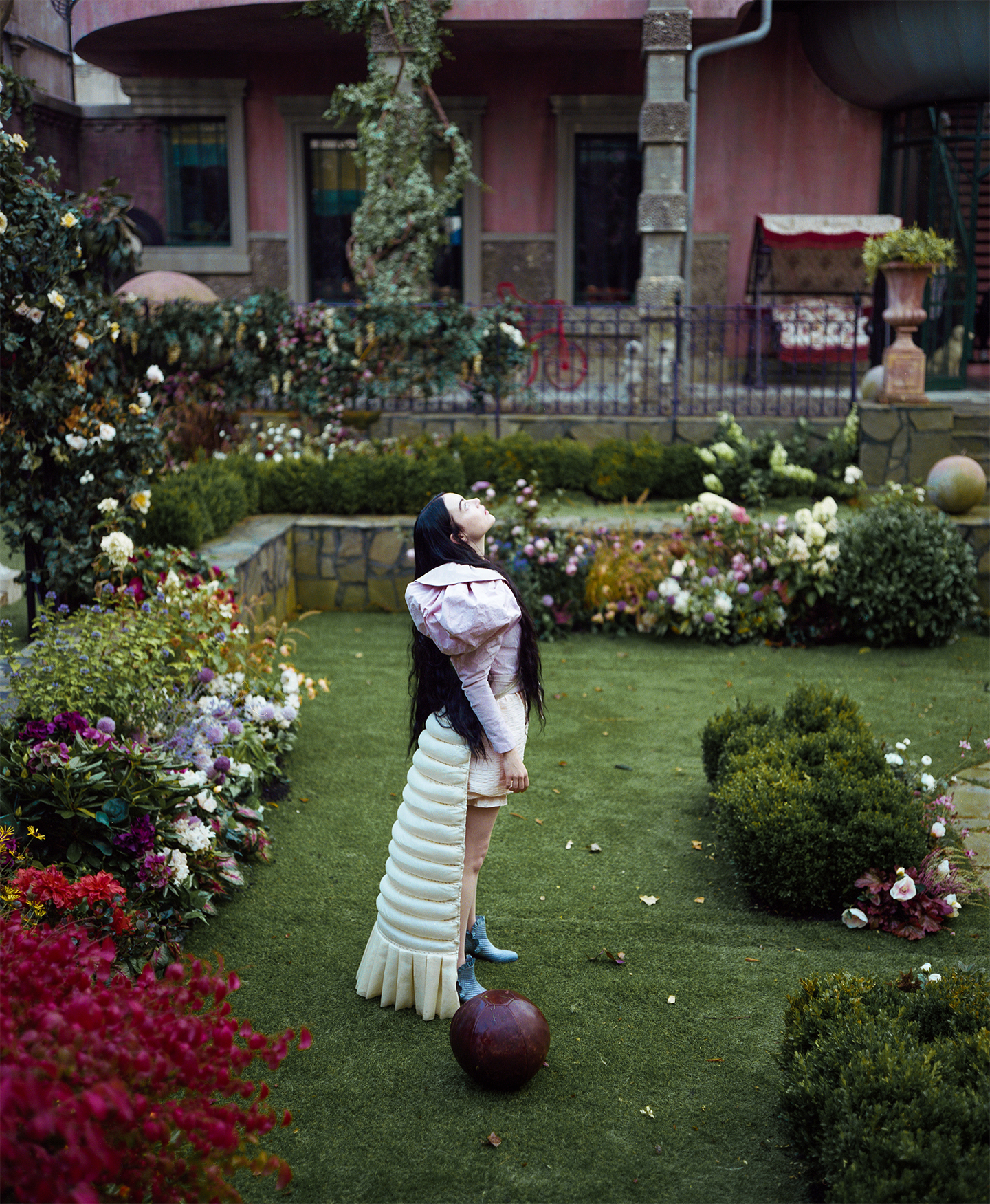
Balloon sleeves and voluminous shoulders play a pivotal role in defining Bella's character in 'Poor Things.' Courtesy of Searchlight
The shoulders play a pivotal role in shaping Bella's character, becoming increasingly prominent as she approaches the end of her odyssey and self-discovery. They eventually resize to more moderate and realistic proportions, indicating the moment when the reality of life bursts Bella’s bubble of fantasy.
The Outset of Bella Baxter’s Journey
Driven by her insatiable curiosity, Bella Baxter sets forth on a journey to explore new lands, free from the constraints of Mrs. Prim’s dress code. As a result, she embraces a more unconventional approach to her attire. Her clothing is mismatched, with some pieces worn haphazardly or not buttoned up correctly, mirroring Bella’s state of mind, which is both confused and excited. It looks as if she selected her outfits on a whim, like a child playing dress-up in their parents’ wardrobe.
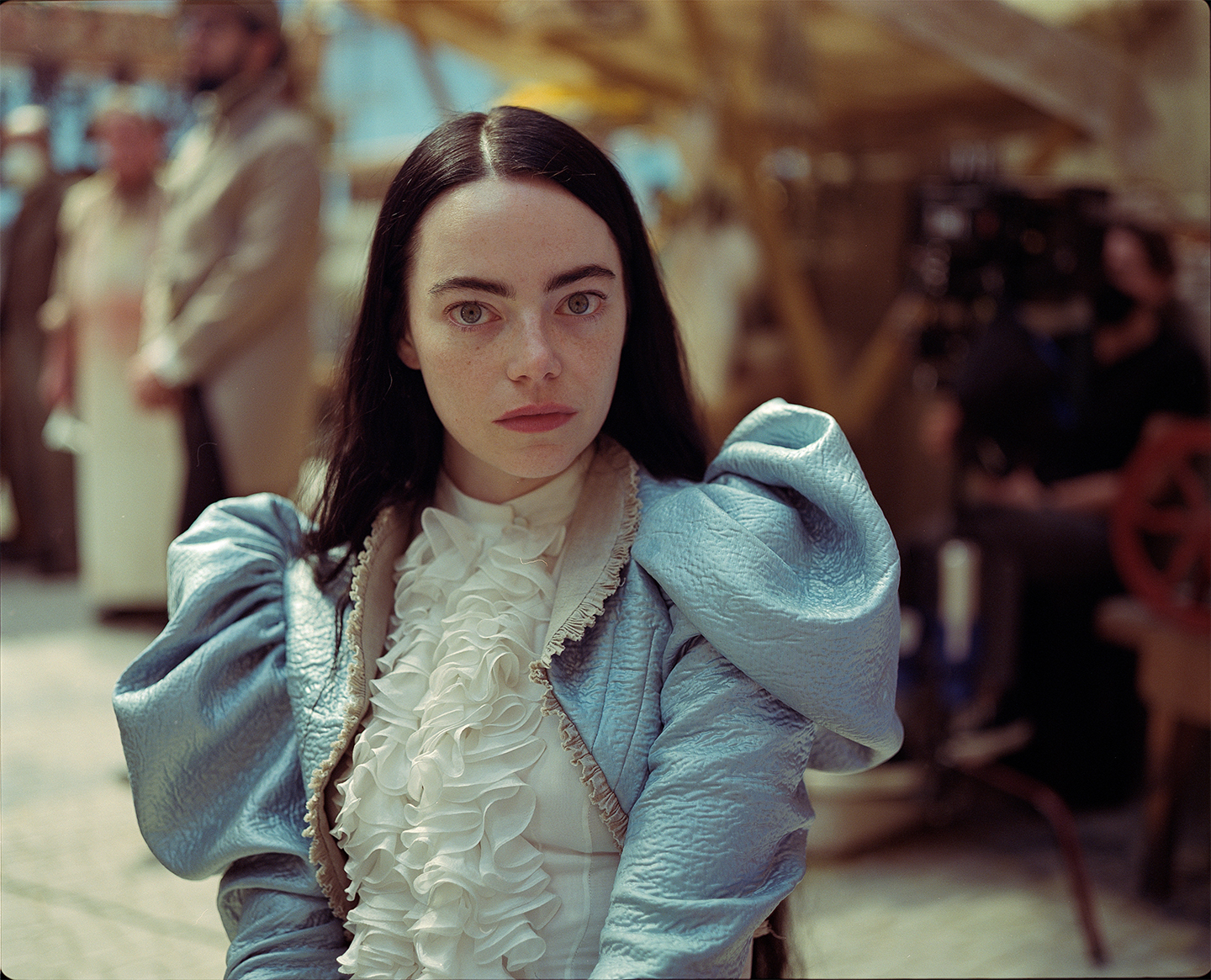
Emma Stone portrays Bella Baxter in 'Poor Things.' Courtesy of Searchlight
Some garments are switched between looks, like the dusty blue balloon sleeve jacket, while the ruffle top, originally a Victorian modesty piece, is used as a bib here. What appears to be a high-waist skirt is actually underwear, creating a jarring feeling. This feeling is amplified by the 70s sci-fi-inspired boots paying homage to Courragès’ design.
Corsets were intentionally excluded from the costumes throughout the movie, as explained by the costume designer, Holly Waddington, at the Barbican London Museum: “We did away with the corsets. That’s partly what makes the clothes feel so liberated. This is a feminist film; it doesn’t sit very well conceptually if you’re trying to make a feminist film to put your lead in this garment that forces the body into an idealised shape, which is what the corset does.”
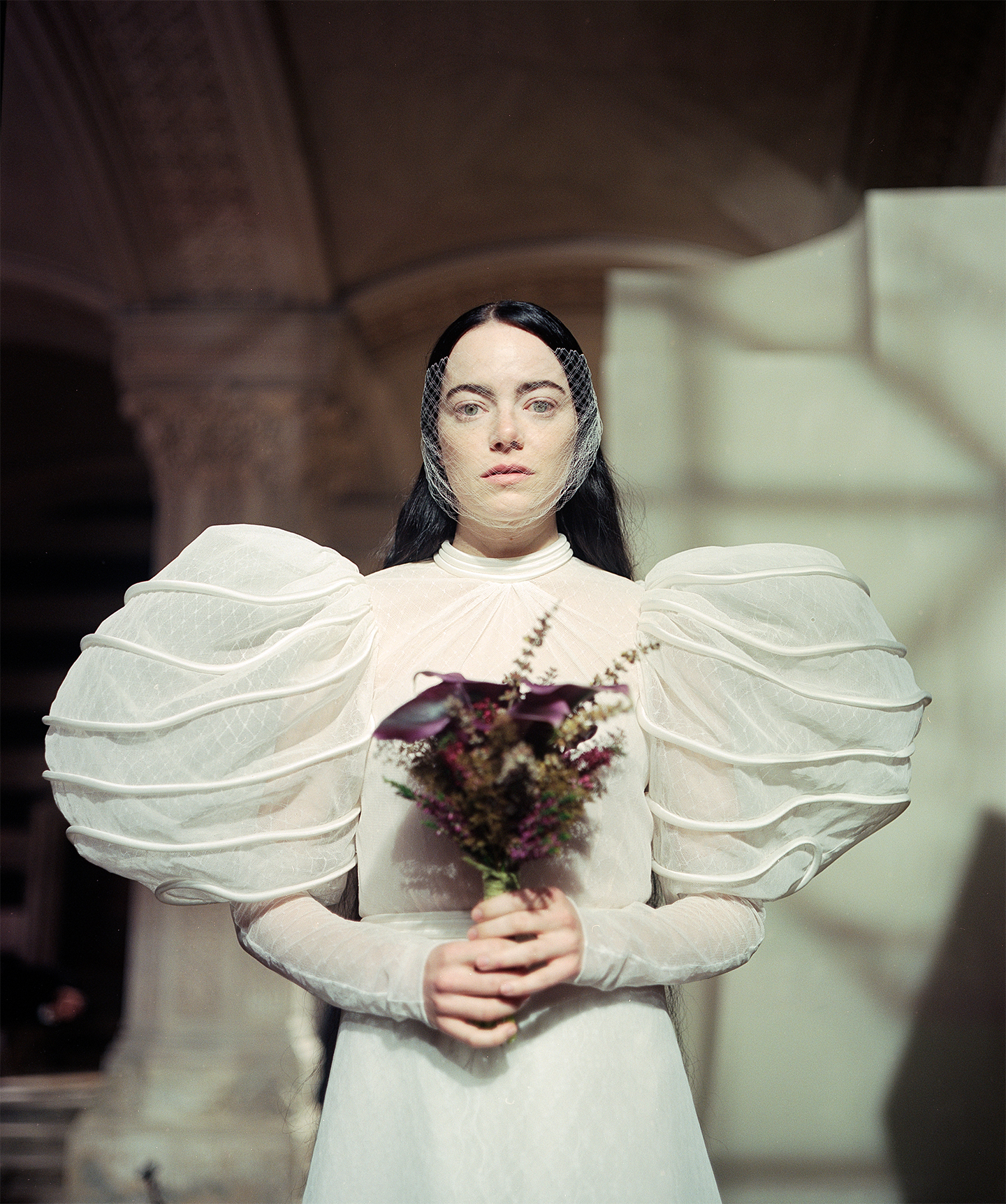
Bella Baxter's wedding dress. Courtesy of Searchlight
The concept became even more tangible during the wedding scene, where Waddington opted for a braid dress made of see-through fabric, an unconventional choice for the occasion. The sleeves were exaggeratedly swollen for one last time, evoking a sense of confinement and desired liberation. This feeling was conveyed through the delicate, almost transparent veil and the circular cuts, serving as mere adornments for the piece.
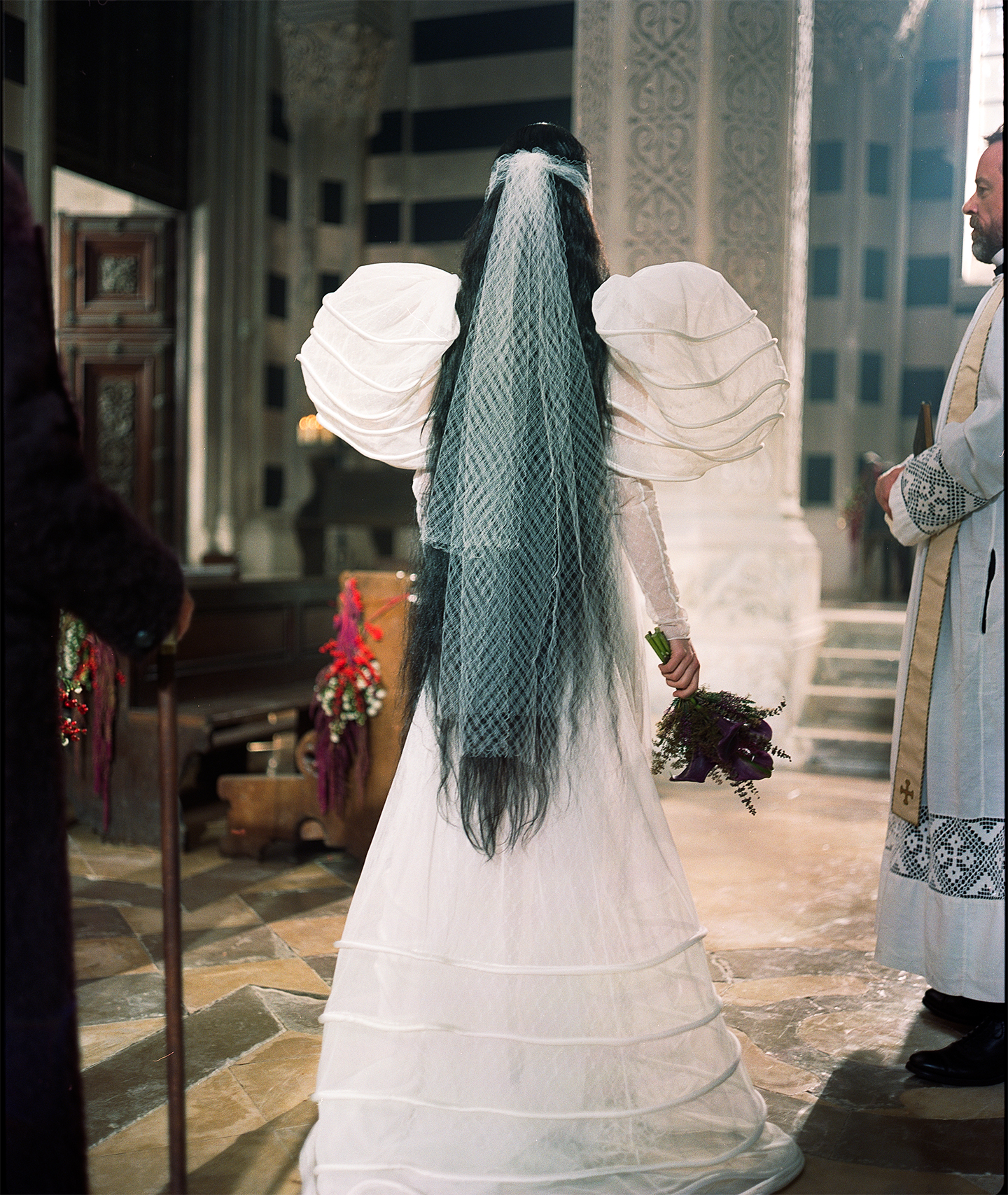
Bella Baxter's wedding dress. Courtesy of Searchlight
The colour palette was another element manipulated to convey a deeper message. Initially, Bella Baxter’s stylistic choices consisted of pastels and childlike combinations. However, the milky white chosen for her bridal look symbolises her innocence and the yet-to-arrive full consciousness, representing the final moment before the ultimate step in her journey of self-discovery.
The Moment of Realisation
Bella Baxter, now settled and conscious of her future, undergoes a metamorphosis reflected in a masculine structured black coat. It retains Bella’s signature passion for puffy sleeves and detailed collars, yet everything is more restrained. The addition of knee-high socks and pointed boots adds an unexpected twist to her fashion, exploring the character’s more mature side. Fun fact: this twist was not originally planned.
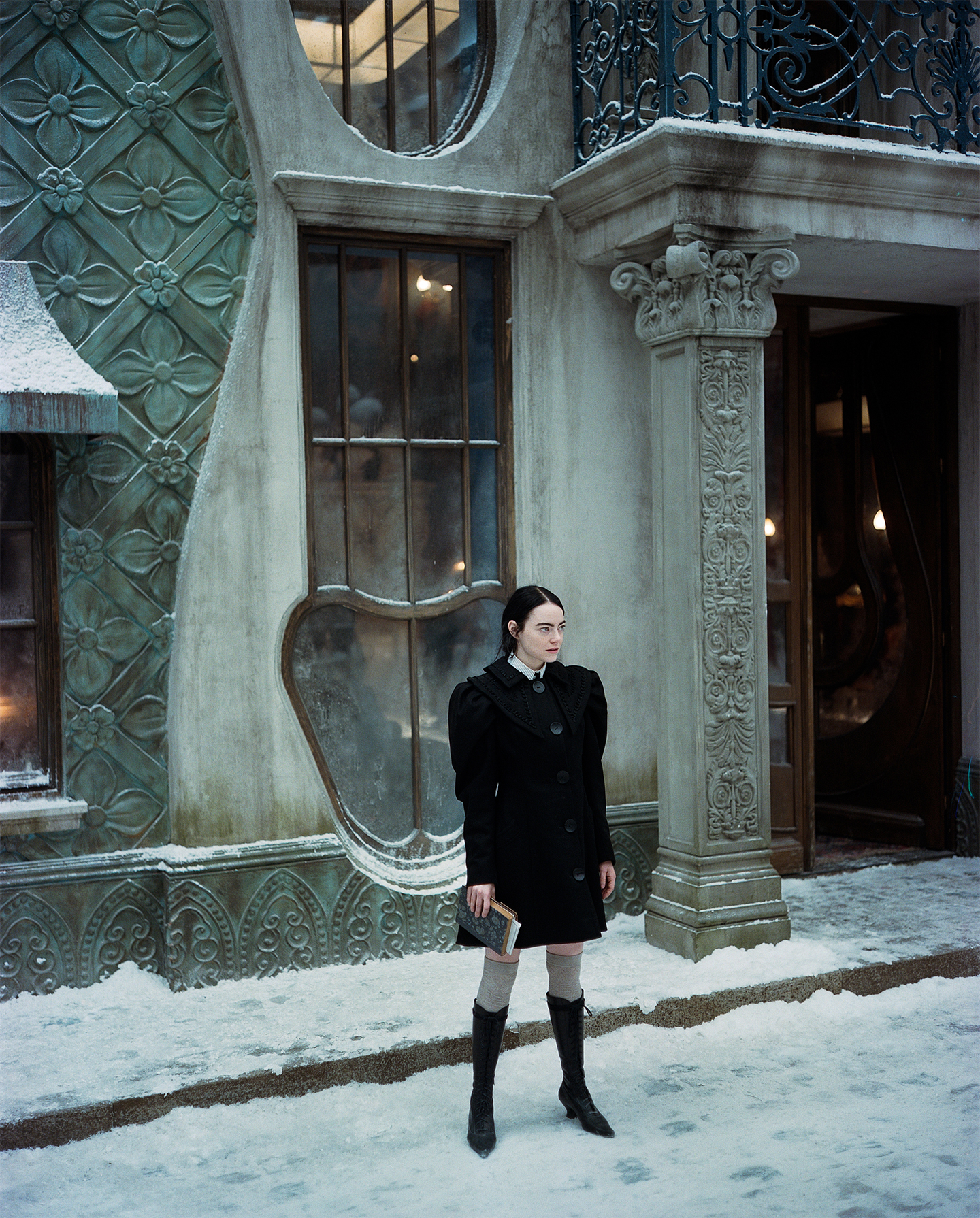
Emma Stone portrays Bella Baxter in 'Poor Things.' Courtesy of Searchlight
‘Poor Things’ concludes with several messages and reflections, as any good movie does. It takes us to a satirical and surreal parallel world, prompting us to recognise the absurdity of our own reality. It shows us how women might react if they were not burdened by societal preconceptions, pressures, and expectations, instilling a sense of authenticity and truth within us. This is what makes Bella Baxter truly unique.
Nicole Giulianini
Fashion Business alumna, Milan



